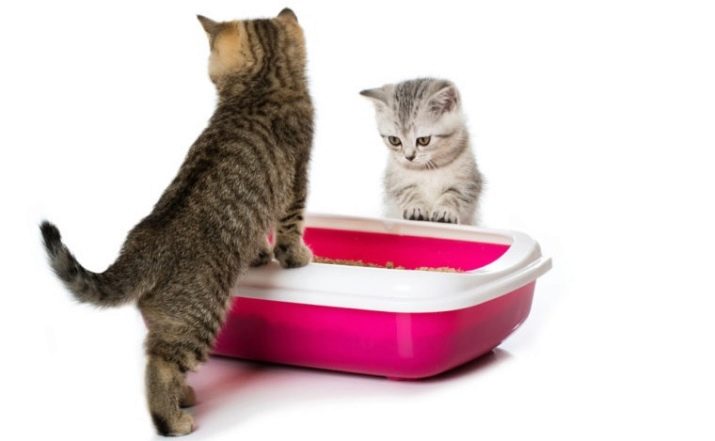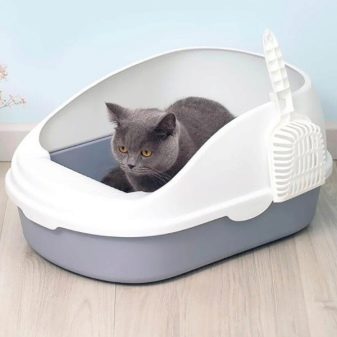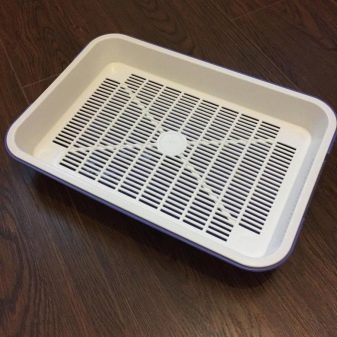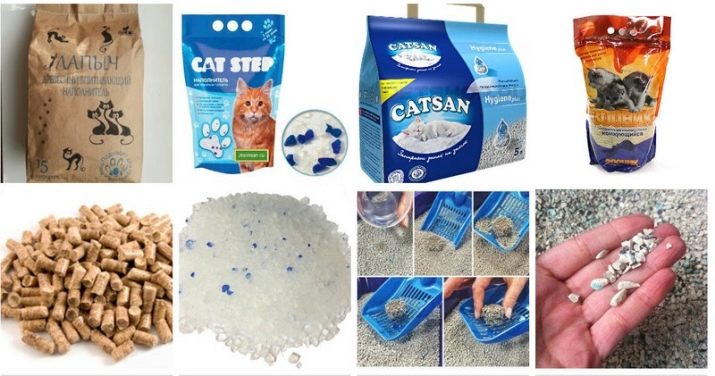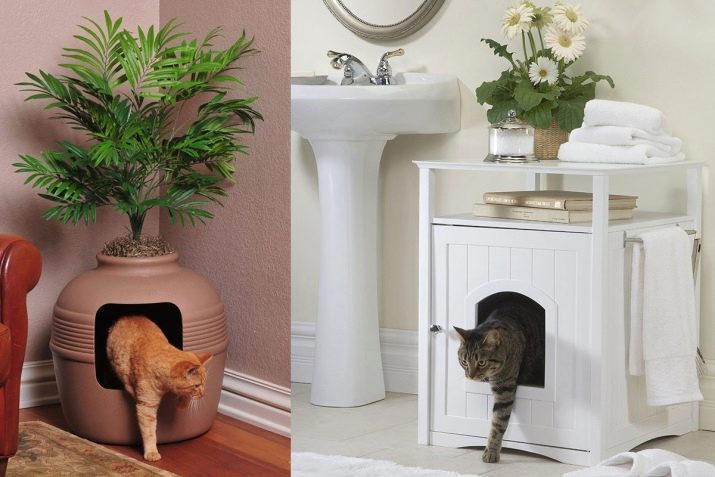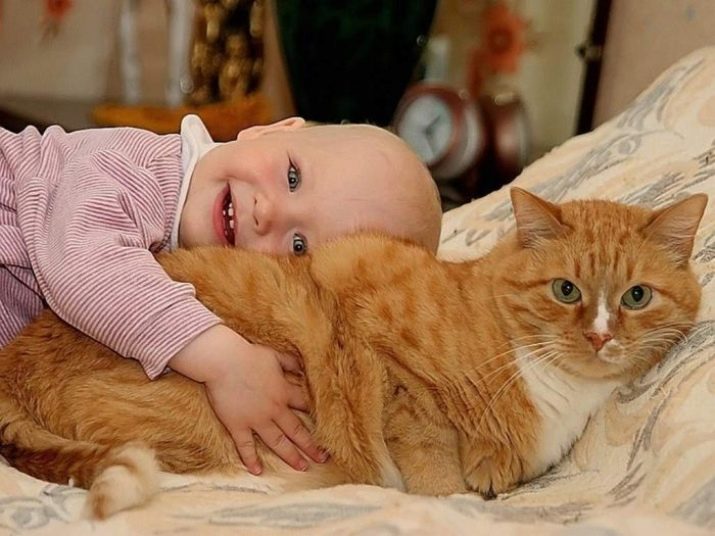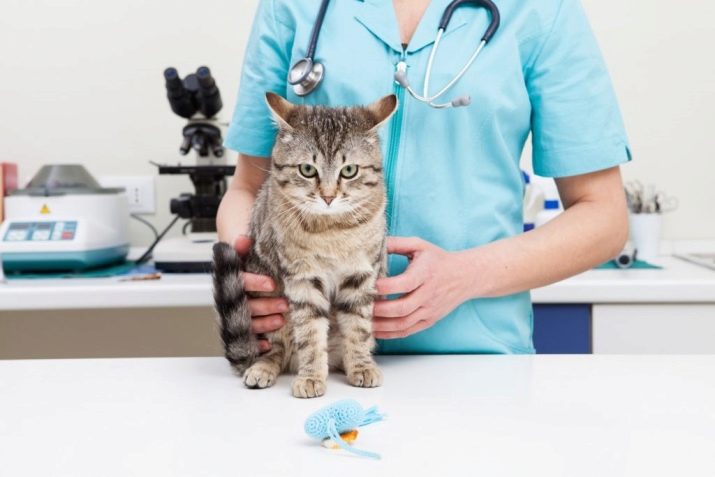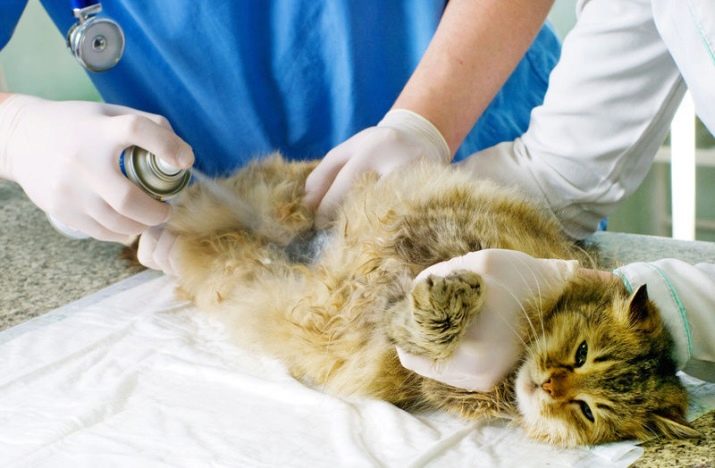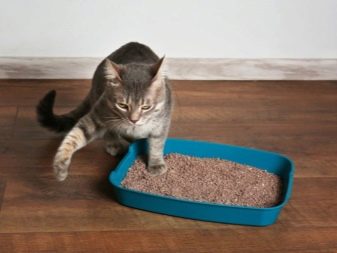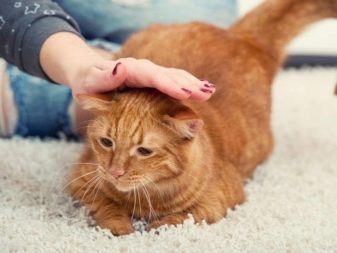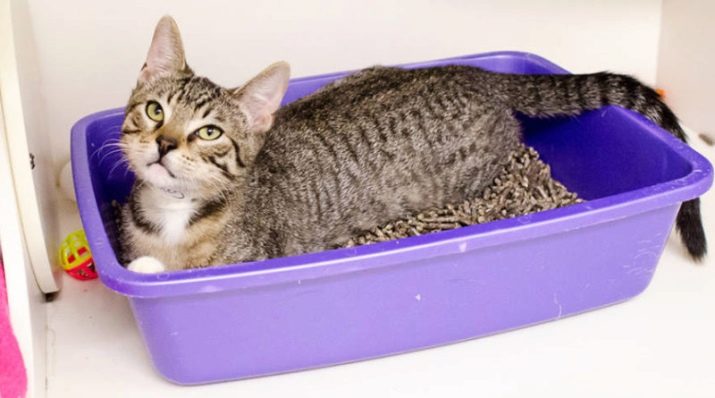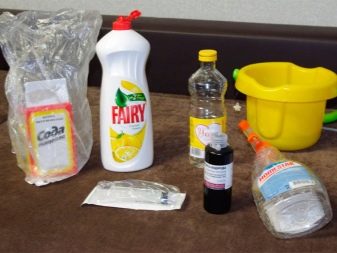Why the cat stopped going to the tray and how to correct the situation?
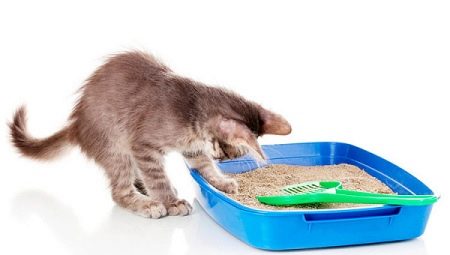
Keeping a cat is a simple matter, which is why many give birth to not only one, but also two, or even three pets. But here's the bad luck: the animal, which until then regularly went to its tray, dramatically changed the course of behavior and chose a completely different place for its toilet. Such a problem scares many breeders, but you should not panic in advance: there is a way out of any situation.
Reasons for discarding the tray and eliminating them
If we are talking about a kitten, then the owners have no reason to worry. After all, the kitten just bought and brought home is completely disoriented, he is helpless and frightened, he does not know where his toilet is and the bowl with food and water. After a while, the baby will get a little comfortable and remember all the necessary places in the house. As a rule, if you take an animal in the nursery, then there are no problems with the tray at all: mother cat and breeders pre-teach the baby to the toilet.
A completely different task is facing the owner of an already adult cat, which for several years went only to its own tray and suddenly completely “forgot” what it needs for it. There are a lot of reasons for this behavior, let's look at them in more detail.
Tray and filler
Most often the question concerns kittens. The animal, which, according to the breeder reviews, perfectly coped with the need for a tray, for some reason ceased to do this in your house. The reason may be covered in the tray. For example, he is too tall, and a small kitten simply can not get there. With some effort and not having succeeded, the crumb just goes to the toilet nearby. In addition, the tray may have a certain smell, especially if it is cheap plastic.
The solution in this case will be buying a lower tray that does not emit foreign odors that can scare a baby.
An adult cat can also refuse to use the toilet. This often happens in the case of buying a new tray. Many animals do not like it if it is different in shape or design.
Therefore, never throw away the old tray before firmly making sure that the animal has accepted the purchase.
The filler is another reason for the reluctance of kittens and adult cats to visit a place reserved for personal needs. For example, a cat used to go to a wood filler, and you saw a novelty with a pleasant aroma in a pet store, and even for a stock, and, of course, could not resist buying, believing that the pet would appreciate the effort. Not at all, cats are quite conservative, they do not like change and try to avoid it. The animal may not like the texture of the new granules, or maybe dust emanates from them, a strange smell, and their paws stick to them.
Do not buy new fillers without having a little bit of old in stock, so that in case of failure you can quickly pour in the usual structure for the cat. When purchasing a kitten, it is advisable to ask the breeder what kind of filler the baby went to before, and buy the same one. It will be necessary to carry out several experiments with a kid taken from the street in order to understand which composition will be pleasant for him.
Wrong location
Cats are secretive animals, and they will not like it if the process of managing needs is observed. Therefore, it is strongly recommended not to put the tray in the room, in the corridor, closer to the kitchen - that is, in all those places where family members constantly move.From this the cat will experience stress and may not go to the toilet at all. Of course, all the cats here can not be implied, for some it does not matter where their tray is located, but most animals still prefer secluded places.
A good accommodation option would be a bathroom, but do not forget to leave the door ajar.
As well as the tray can be put in the far corner of the corridor, somewhere under a tall cupboard or hanging shelves. If you have a closet in the corridor, you can equip a toilet for a cat at the very bottom by first making a small hole in the lower part of the closet so that the animal can crawl through.
Psychological problems
One of the most common psychological problems is relocation. Once in the new house, an adult animal, of course, will understand that it is his tray, and will remember the location of the toilet. But due to stress, the cat is capable of spoiling, attracting the attention of the owners.
Do not scold your pet if you find a puddle or pile. Be sure to talk to the cat, let him understand that he is safe.
At the time of stress, the cat can be equipped with a high couch or provide a secluded place in the closet where she can hide. After a couple of days, the pet will come to his senses, and everything will be fine.
Another psychological problem may be the birth of a child. Cats for the most part do not like children, because the kids are noisy, and their voices are too high for the cat's ear. In this case, for some time do not let the cat to the baby, let it get used to the new sounds, do not force to communicate with the child. Do not throw a cat during this period, your attention it needs no less than a newborn baby.
If an older child came to your home, for example, relatives came to visit, explain that a cat should not be tied by the tail, ears, or squeezed.
A cat can get angry if another pet is brought home, not necessarily a cat too. The animal will become jealous and become unpredictable.
Do not deprive the older pet of attention, acquaint the animals gradually and in no case do not interfere in the "disassembly", because the cat - this is not a man, she may not understand something. At the same time, remember that each pet needs separate bowls and toilets, and it is not necessary to place them initially next to each other.
The animal can be scared by the repair, which is necessarily accompanied by noise, thud, voices of strangers. Especially if the repair is done in the room where the toilet is located. For this period, the cat must be isolated, placing in a separate room. In the same place it is necessary to put its bowls and a tray, to equip a place where the pet will have a rest.
Health problems
A cat may begin to go to the toilet anywhere, if she is sick. One of the common ailments is urolithiasis, which is mostly characteristic of castrated cats. It is difficult for the animal to recover, the outflow of fluid is delayed due to stones or sand. The second attack is urinary incontinence. You can easily find wet spots where the cat used to sleep or lie down. There is a disease as a complication after castration and in chronic kidney diseases. And also a cat can be tormented by cystitis - at the same time you will find urine with blood impurities.
In addition, the cat can shit if he has diarrhea. Here the food is already to blame, perhaps you fed the animal with something too fat, smoked, fried or gave him milk. As soon as it seems to you that something is wrong with the cat, he walks strangely in the tray or began to ignore it altogether, and the animal’s well-being deteriorates, do not hesitate.
Kota will have to show the vet, and only this will solve the problem that the animal walks past its tray or leaves puddles in the wrong place.
Other options
If your cat is uncastrated, this can lead to a serious problem. The animal will mark the territory, and since its territory is the whole apartment, get ready for unpleasant smells and detected marks. It is impossible to make the cat not mark, only the castration procedure will help here.It is advisable to spend it at the age of 6 months to a year, while the cat has not yet realized that you need to mark your possessions.
Non-sterilized cats also have their quirks. An animal, not finding a male, will plague the owners with a mewing, and realizing that this does not bring results, it is quite capable of choosing a toilet, a bed, a table with its toilet. Thus, the cat informs you about its problems. Screaming and chasing her around the house to get her face in the waste, absolutely pointless. The animal harbors anger and is sure to come to the crime scene again.
The output will be sterilization. And also, if the cat shits in any one place, you can close the door to the room.
Usually an animal that can not get into the room, there is nothing left but to return to the old toilet. The reason that the pet began to go to the toilet in the wrong place may be the most banal - you do not follow the cleanliness of the tray. An animal, having found a pile in the toilet, may simply not go there again.
Retraining tips
To accustom the cat to the tray will have to re-if the animal was sick for a long time or he had unpleasant feelings in coping with needs. Because of this, the tray can be associated with something painful and negative. The first thing to do in this case:
- buy a new tray;
- purchase fresh filler.
Then follows the immediate process of teaching the animal to the tray. Rudeness and cruelty can not be shown, but you need to be persistent. Show the cat again how to dig the filler with the paw (while taking it by the paw). At first, watch the cat: if you find that the animal is going to go to the toilet in the wrong place, carefully take it and take it to the tray. In this case, strictly tell the cat "no", and upon arrival at the place, pet the pet, talk to him affectionately, pound the filler with his foot.
Then leave the animal alone with itself so that it can relax. When the cat comes out, treat him with something delicious. It is necessary to treat an animal and subsequently (at least within a week), each time when it correctly goes to the toilet. Simple techniques will help correct the situation and permanently get rid of the problem. Consider a few more tips:
- Do not be alarmed if the cat has ordinary stress - after a certain time the pet will calm down and return to its usual way of life;
- if the cat is very small or already old, do not buy trays with high sides;
- if the cat persistently refuses to return to the pot, outsmart it: treat the place chosen by the pet with lemon or vinegar, scatter the foil or balls there so that the cat cannot concentrate, close the door to this room;
- an animal that has wondered about going to the bathroom will not like it if there is some water in it;
- do not yell at the cat and do not hit her - a “shot” from the spray gun will be much more effective;
- Use various anti-bad snags, which are abundant on the shelves of pet stores.
We remove the smell of tags
Unfortunately, the smell of cat urine has a special saturation, and it is often quite difficult to remove it. However, the problem can be solved.
- Dilute a small amount of vinegar in a glass of water and wash the label well. And also the smell of vinegar will scare the cat away from this place.
- Wipe the surface with hydrogen peroxide, then wash it with plain water with a small amount of soap.
- Lemon juice has a good deterrent effect. You can take half a lemon and rub it well with a pre-washed label. And you can dissolve the juice in a glass of water and apply to the cat's favorite place.
- Tea brewing, a weak solution of potassium permanganate, a rinse for gums, alcohol-containing antiseptics will help to get rid of odors and stains. A good idea would be to dilute 20 drops of iodine in a liter of water, and then with this solution wash the feline "crime".
In addition to folk remedies, you can always use the store stocks, which will also be effective.
- 8 in 1 Stain & Odor Remover. This tool copes well with any contamination, including residues of feces and urine. Before its application, the affected surface must be wiped well, and then abundantly apply the composition. After 5 minutes, the remuver is wiped with a dry cloth, and all that remains to be done is just to wait until the surface dries out.
- Simple Solution Urine Destroyer. According to its characteristics and method of use, the tool is no different from the previous one, only you need to wait not 5 minutes, but 10. The product cannot be used on woolen and leather surfaces.
- Capsull Neutralizor Cat & Kitten. The composition copes well not only with the breeding of spots, but also with the scaring of the animal from the place. Liquid will need to be sprayed onto a previously wiped surface and wait a few minutes, then remove with a napkin. After spraying, old and stubborn stains are covered with a film for a couple of hours and only then wiped.
Among Russian drugs, good reviews are Zoosan, Loyal Friend, Smart Spray.
All of these tools are the same to use, the difference lies only in the composition. This is not a complete list, each pet store offers its products, and there are constantly various new items in this area, allowing to improve the quality of life of both the pet and its owner.
How to teach a kitten to the tray, see the following video.
